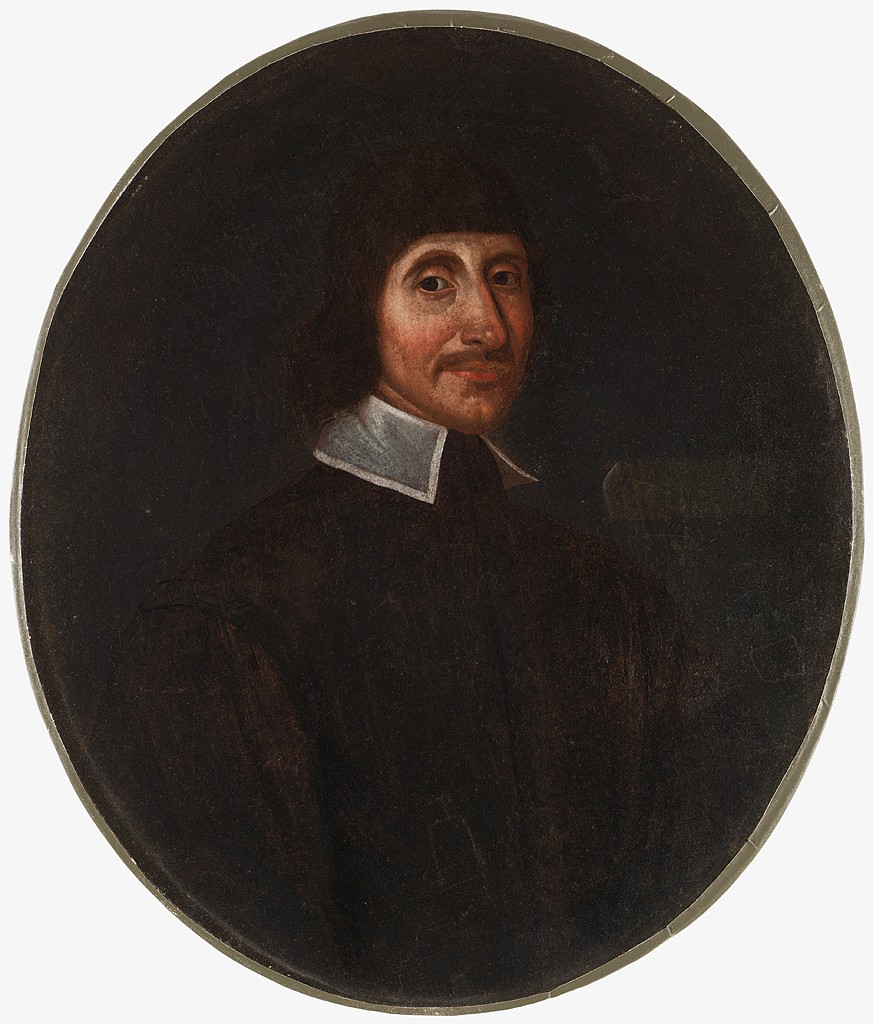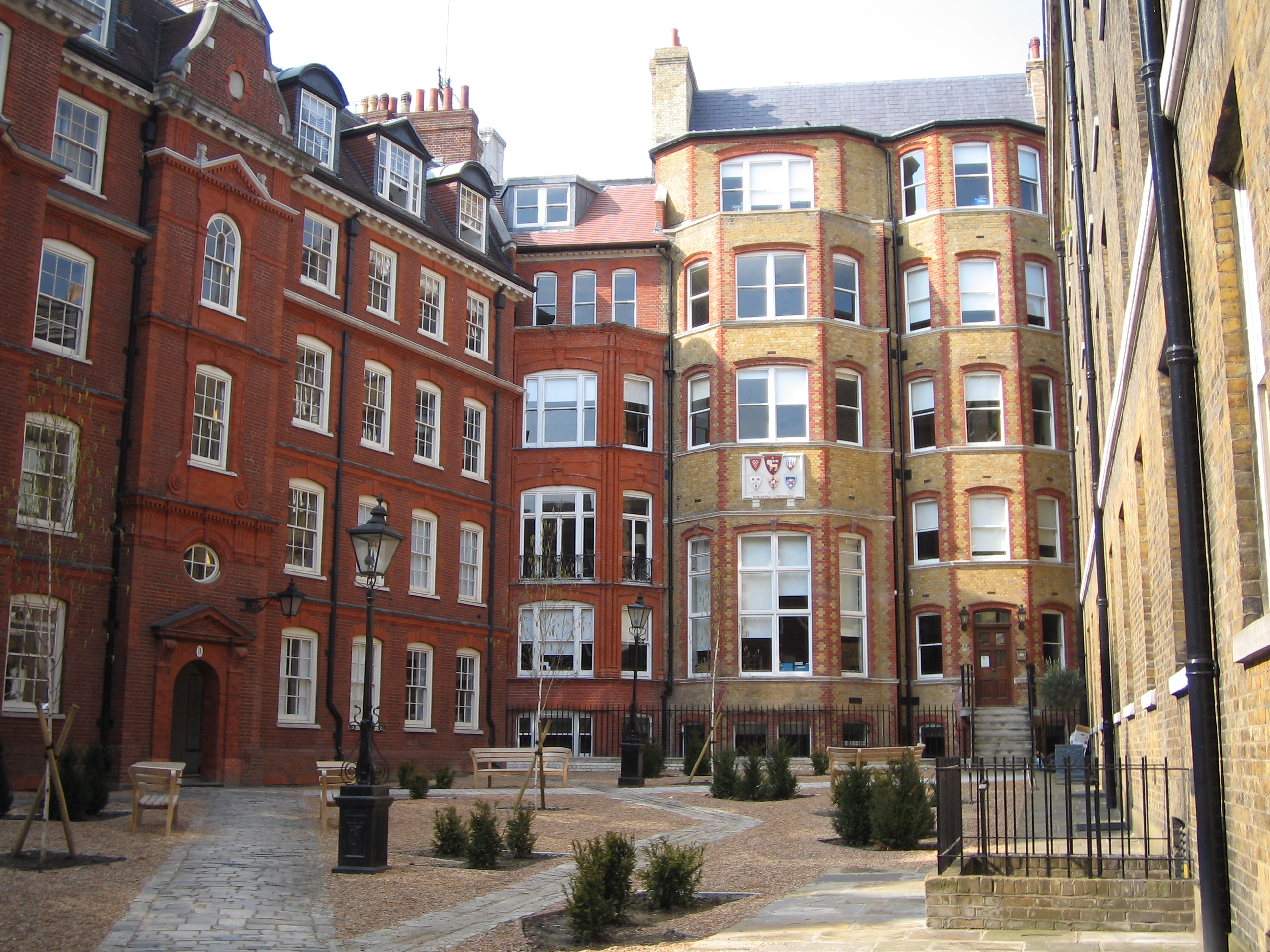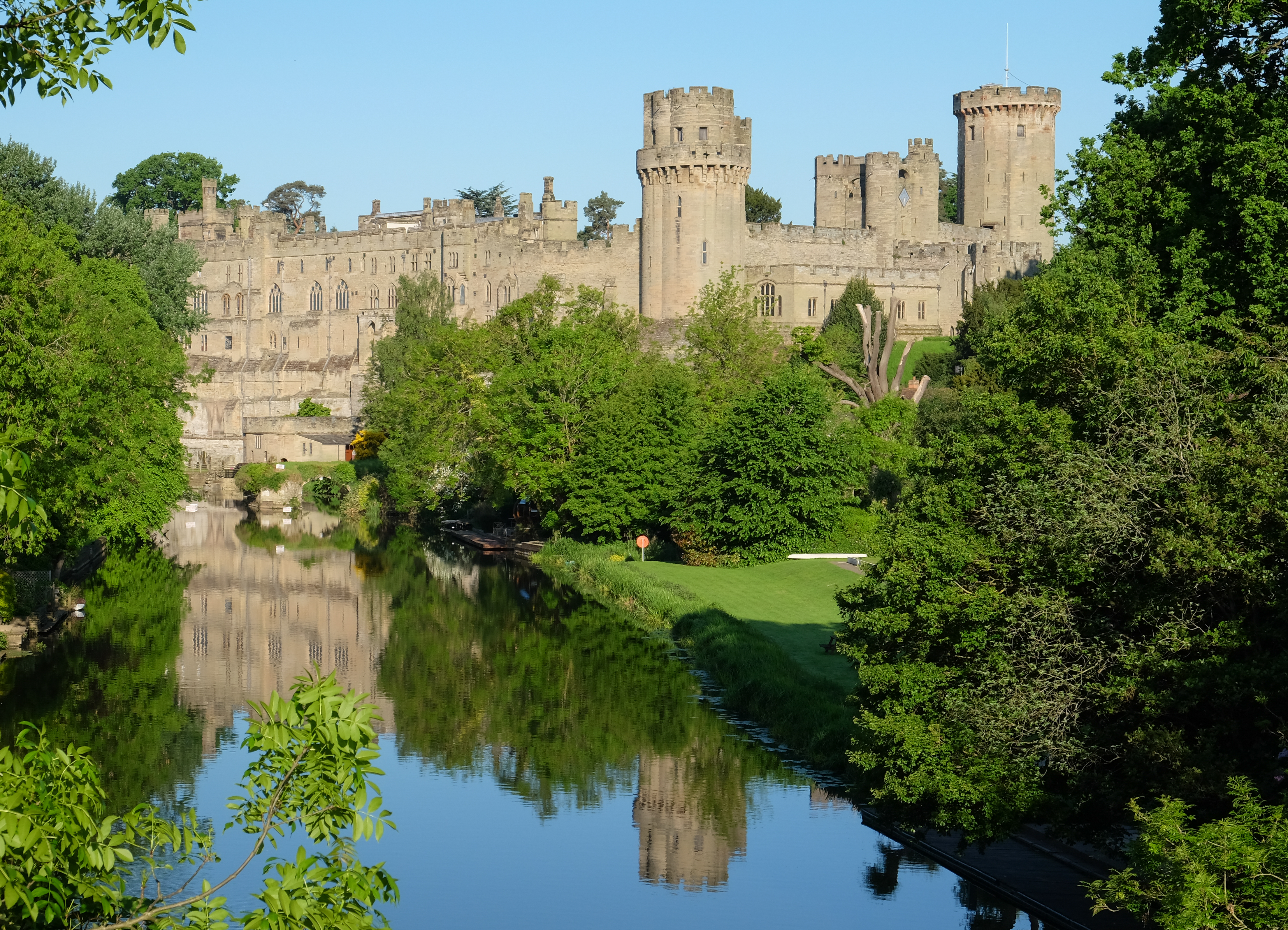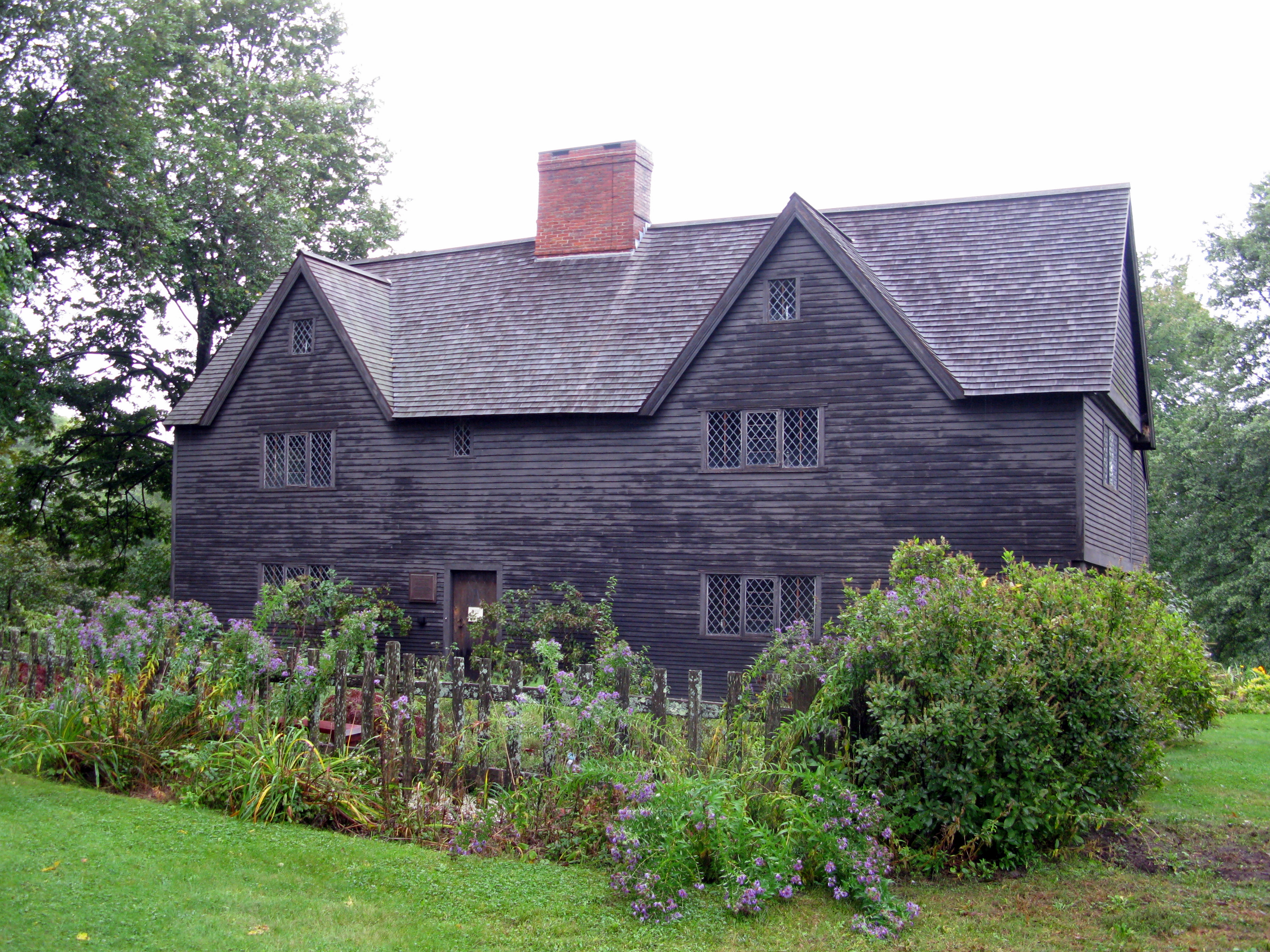|
John Winthrop The Younger
John Winthrop the Younger (February 12, 1606 – April 6, 1676) was an early governor of the Connecticut Colony, and he played a large role in the merger of several separate settlements into the unified colony. Early life Winthrop was born in Groton, Suffolk, England on February 12, 1606, the son of John Winthrop, founding governor of the Massachusetts Bay Colony. He was educated at the Bury St. Edmunds grammar school, King Edward VI School, and Trinity College, Dublin, and he studied law for a short time after 1624 at the Inner Temple, London. Career Winthrop accompanied the ill-fated expedition of the Duke of Buckingham for the relief of the Protestants of La Rochelle in France, and then travelled in Italy and the Levant, returning to England in 1629. In 1631, he followed his father to Massachusetts Bay Colony and was one of the assistants of the Colony in 1635, 1640, and 1641 and from 1644 to 1649. He was the chief founder of Agawam (now Ipswich, Massachusetts) in 1633 ... [...More Info...] [...Related Items...] OR: [Wikipedia] [Google] [Baidu] |
List Of Colonial Governors Of Connecticut
The territory of the United States state of Connecticut was first settled by Europeans in the 1620s, when Dutch traders established trading posts on the Connecticut River. English settlers, mainly Puritans fleeing repression in England, began to arrive in the 1630s, and a number of separate colonies were established. The first was the Saybrook Colony in 1635, based at the mouth of the Connecticut; it was followed by the Connecticut Colony (first settlement 1633, government from 1639) and the New Haven Colony (settled 1638, government from 1639). The Saybrook Colony merged with the Connecticut Colony in 1644, and the New Haven Colony was merged into Connecticut between 1662 and 1665 after Connecticut received a royal charter. The Connecticut Colony was one of two colonies (the other was the neighboring Colony of Rhode Island and Providence Plantations) that retained its governor during the American Revolution. The last colonial governor, Jonathan Trumbull, became the state of ... [...More Info...] [...Related Items...] OR: [Wikipedia] [Google] [Baidu] |
Inner Temple
The Honourable Society of the Inner Temple, commonly known as the Inner Temple, is one of the four Inns of Court and is a professional associations for barristers and judges. To be called to the Bar and practise as a barrister in England and Wales, a person must belong to one of these Inns. It is located in the wider Temple area, near the Royal Courts of Justice, and within the City of London. The Inn is a professional body that provides legal training, selection, and regulation for members. It is ruled by a governing council called "Parliament", made up of the Masters of the Bench (or "Benchers"), and led by the Treasurer, who is elected to serve a one-year term. The Temple takes its name from the Knights Templar, who originally (until their abolition in 1312) leased the land to the Temple's inhabitants (Templars). The Inner Temple was a distinct society from at least 1388, although as with all the Inns of Court its precise date of founding is not known. After a disrupted early ... [...More Info...] [...Related Items...] OR: [Wikipedia] [Google] [Baidu] |
Braintree, Massachusetts
Braintree (), officially the Town of Braintree, is a municipality in Norfolk County, Massachusetts, United States. Although officially known as a towBraintree is a city, with a mayor-council government, mayor-council form of government, and is considered a city under Massachusetts law. The population was 39,143 at the 2020 census. The city is part of the Greater Boston area with access to the MBTA Red Line, and is a member of the Metropolitan Area Planning Council's South Shore Coalition. The first mayor of Braintree was Joe Sullivan who served until January 2020. The current mayor of Braintree is Charles Kokoros. Braintree, Massachusetts, is named after Braintree, Essex, in England. The town was first chartered in 1640. Later, some sections of Braintree formed separate municipalities: Quincy (1792), Randolph (1793), and Holbrook (1872). History European settlers first arrived in 1625. Subsequent to their arrival, the town was colonized in 1635, and ultimately incorp ... [...More Info...] [...Related Items...] OR: [Wikipedia] [Google] [Baidu] |
Saugus Iron Works
Saugus may refer to: Places * Saugus, Massachusetts, U.S. * Saugus, Santa Clarita, California, U.S., named after its sister city in Massachusetts * Saugus, Montana, U.S. * Saugus River, in Massachusetts, U.S. Education * Saugus High School (California), U.S. **Saugus High School shooting * Saugus Middle-High School, Massachusetts, U.S. * Saugus Public Schools, Massachusetts, U.S. * Saugus Union School District, California, U.S. Other uses * , the name of several ships See also * ''Saugus Advertiser'', newspaper covering the town of Saugus, Massachusetts, U.S. * Saugus Iron Works National Historic Site, Massachusetts, U.S. * Saugus Speedway, racetrack in Saugus, Santa Clarita, California, U.S. * Saugus Town Hall Saugus Town Hall is a historic town hall in Saugus, Massachusetts. It was built in 1875 and added to the National Register of Historic Places in 1985. Construction In 1874, construction began on Saugus' second and present town hall. The corner ..., in Saugus, Massac ... [...More Info...] [...Related Items...] OR: [Wikipedia] [Google] [Baidu] |
Lynn, Massachusetts
Lynn is the eighth-largest municipality in Massachusetts and the largest city in Essex County. Situated on the Atlantic Ocean, north of the Boston city line at Suffolk Downs, Lynn is part of Greater Boston's urban inner core. Settled by Europeans in 1629, Lynn is the 5th oldest colonial settlement in the Commonwealth. An early industrial center, Lynn was long colloquially referred to as the "City of Sin", owing to its historical reputation for crime and vice. Today, however, the city is known for its contemporary public art, immigrant population, historic architecture, downtown cultural district, loft-style apartments, and public parks and open spaces, which include the oceanfront Lynn Shore Reservation; the 2,200-acre, Frederick Law Olmsted-designed Lynn Woods Reservation; and the High Rock Tower Reservation, High Rock Reservation and Park designed by Olmsted Brothers, Olmsted's sons. Lynn also is home to Lynn Heritage State Park, the southernmost portion of the Essex Co ... [...More Info...] [...Related Items...] OR: [Wikipedia] [Google] [Baidu] |
John Winthrop, Jr
John is a common English name and surname: * John (given name) * John (surname) John may also refer to: New Testament Works * Gospel of John, a title often shortened to John * First Epistle of John, often shortened to 1 John * Second Epistle of John, often shortened to 2 John * Third Epistle of John, often shortened to 3 John People * John the Baptist (died c. AD 30), regarded as a prophet and the forerunner of Jesus Christ * John the Apostle (lived c. AD 30), one of the twelve apostles of Jesus * John the Evangelist, assigned author of the Fourth Gospel, once identified with the Apostle * John of Patmos, also known as John the Divine or John the Revelator, the author of the Book of Revelation, once identified with the Apostle * John the Presbyter, a figure either identified with or distinguished from the Apostle, the Evangelist and John of Patmos Other people with the given name Religious figures * John, father of Andrew the Apostle and Saint Peter * Pope Joh ... [...More Info...] [...Related Items...] OR: [Wikipedia] [Google] [Baidu] |
Connecticut River
The Connecticut River is the longest river in the New England region of the United States, flowing roughly southward for through four states. It rises 300 yards (270 m) south of the U.S. border with Quebec, Canada, and discharges at Long Island Sound. Its watershed encompasses , covering parts of five U.S. states and one Canadian province, via 148 tributaries, 38 of which are major rivers. It produces 70% of Long Island Sound's fresh water, discharging at per second. The Connecticut River Valley is home to some of the northeastern United States' most productive farmland, as well as the Hartford–Springfield Knowledge Corridor, a metropolitan region of approximately two million people surrounding Springfield, Massachusetts, and Hartford, Connecticut. History The word "Connecticut" is a corruption of the Mohegan word ''quinetucket'', which means "beside the long, tidal river". The word came into English during the early 1600s to name the river, which was also called simply "Th ... [...More Info...] [...Related Items...] OR: [Wikipedia] [Google] [Baidu] |
Saybrook Colony
The Saybrook Colony was an English colony established in late 1635 at the mouth of the Connecticut River in present-day Old Saybrook, Connecticut by John Winthrop, the Younger, son of John Winthrop, the Governor of the Massachusetts Bay Colony. Winthrop the Younger was designated Governor by the original settlers, including Colonel George Fenwick and Captain Lion Gardiner. They claimed possession of the land via a deed of conveyance from Robert Rich, 2nd Earl of Warwick. The colony was named in honor of Lords Saye and Brooke, prominent Parliamentarians and holders of the colony's land grants. History Early settlers of the colony were ardent supporters of Oliver Cromwell and of democracy. In the 1630s in what became Connecticut, it was rumored that Cromwell's emigration was imminent from England to Saybrook, along with the departure from Old England of other prominent Puritan sponsors of the colony, including John Pym, John Hampden, Arthur Haselrig, and Lords Saye and Brooke. E ... [...More Info...] [...Related Items...] OR: [Wikipedia] [Google] [Baidu] |
Robert Greville, 2nd Baron Brooke
Robert Greville, 2nd Baron Brooke (May 1607 – 4 March 1643) was a radical Puritan activist and leading member of the opposition to Charles I of England prior to the outbreak of the First English Civil War in August 1642. Appointed Roundhead, Parliamentarian commander in Staffordshire and Warwickshire, he was killed by a Cavalier, Royalist sniper at Lichfield on 2 March 1643. The son of a minor member of the Lincolnshire gentry, Greville was adopted at the age of four by his childless distant cousin Fulke Greville, 1st Baron Brooke, and inherited his title and Warwick Castle in 1628. A devout Calvinism, Calvinist, he was closely associated with Puritan activists and opponents of the 1629 to 1640 period of Personal Rule, including John Pym, John Hampden and Arthur Haselrig. From 1640 to 1642, he and William Fiennes, 1st Viscount Saye and Sele, Lord Saye were central to securing support in the House of Lords for legislation passed by the English House of Commons, Commons. Althoug ... [...More Info...] [...Related Items...] OR: [Wikipedia] [Google] [Baidu] |
William Fiennes, 1st Viscount Saye And Sele
William Fiennes, 1st Viscount Saye and Sele (28 June 158214 April 1662) was an English nobleman and politician, known also for his involvement in several companies for setting up overseas colonies. Early life He was born at the family home of Broughton Castle near Banbury, in Oxfordshire, the only son of Richard Fiennes, 7th Baron Saye and Sele, and his wife Constance, daughter of Sir William Kingsmill. He was educated at New College, Oxford. He was a descendant and heir of the sister of William of Wykeham, the college's founder. Fiennes succeeded to his father's barony in 1613. 1620s During the latter part of James I's reign, Saye was one of the most prominent opponents of the court. In 1621 he was active against Francis Bacon, and urged that he should be degraded from the peerage. In 1622 he opposed the benevolence levied by the king, saying that he knew no law besides parliament to persuade men to give away their own goods; he spent six months in the Fleet Prison, and then ... [...More Info...] [...Related Items...] OR: [Wikipedia] [Google] [Baidu] |
Ipswich, Massachusetts
Ipswich is a coastal town in Essex County, Massachusetts, United States. The population was 13,785 at the 2020 census. Home to Willowdale State Forest and Sandy Point State Reservation, Ipswich includes the southern part of Plum Island. A residential community with a vibrant tourism industry, the town is famous for its clams, celebrated annually at the Ipswich Chowderfest, and for Crane Beach, a barrier beach near the Crane estate. Ipswich was incorporated as a town in 1634. History Ipswich was founded by John Winthrop the Younger, son of John Winthrop, one of the founders of the Massachusetts Bay Colony in 1630 and its first governor, elected in England in 1629. Several hundred colonists sailed from England in 1630 in a fleet of 11 ships, including Winthrop's flagship, the ''Arbella''. Investigating the region of Salem and Cape Ann, they entertained aboard the ''Arbella'' for a day, June 12, 1630, a native chief of the lands to the north, Chief Masconomet. The event was record ... [...More Info...] [...Related Items...] OR: [Wikipedia] [Google] [Baidu] |
Levant
The Levant () is an approximate historical geographical term referring to a large area in the Eastern Mediterranean region of Western Asia. In its narrowest sense, which is in use today in archaeology and other cultural contexts, it is equivalent to a stretch of land bordering the Mediterranean in South-western Asia,Gasiorowski, Mark (2016). ''The Government and Politics of the Middle East and North Africa''. }, ), meaning "the eastern place, where the Sun rises". In the 13th and 14th centuries, the term ''levante'' was used for Italian maritime commerce in the Eastern Mediterranean, including Greece, Anatolia, Syria-Palestine, and Egypt, that is, the lands east of Venice. Eventually the term was restricted to the Muslim countries of Syria-Palestine and Egypt. In 1581, England set up the Levant Company to monopolize commerce with the Ottoman Empire. The name ''Levant States'' was used to refer to the French mandate over Syria and Lebanon after World War I. This is probab ... [...More Info...] [...Related Items...] OR: [Wikipedia] [Google] [Baidu] |








.png)